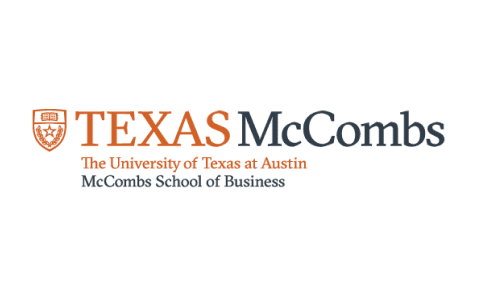Supervised Machine Learning with Logistic Regression and Naïve Bayes
Learn supervised machine learning with logistic regression and Naïve Bayes. Enroll in our free course to gain essential skills and knowledge to take your understanding of these algorithms to the next level.

Ratings
Level
Learning hours

Learners
Skills you’ll Learn
About this Free Certificate Course
In this course, we will cover the fundamentals of supervised machine learning and dive deeper into two popular algorithms: logistic regression and Naïve Bayes.
We will start with an overview of supervised learning and explore the key concepts and terminology used in this area of machine learning. From there, we will delve into logistic regression and learn how to apply this algorithm to binary classification problems. We will also cover evaluation metrics and techniques to improve model performance. Next, we will move on to Naïve Bayes, a probabilistic classifier that is widely used in text classification and spam filtering. We will learn how to implement Naïve Bayes and how to interpret the results.
Throughout the course, we will provide practical examples and case studies to help you understand the real-world applications of these algorithms. By the end of this course, you will have a solid understanding of supervised machine learning with logistic regression and Naïve Bayes, and the skills to apply them to your own projects. So, what are you waiting for? Enroll now and start your learning journey today!
Great Learning has collaborated with the top universities, like the University of Texas at Austin and SRM Institute of Science and Technology, and designed the best AIML Courses in India. Top-class professors have prepared an exhaustive and comprehensive curriculum to provide a world-class education for you to develop advanced skills in the AIML online course. Also, receive personalized mentorship from industry experts who are working at top companies.
Check out our PG Course in Machine learning Today.
Course Outline
This module begins by defining machine learning. It then discusses how a machine understands the tasks with examples and explains supervised and unsupervised learning concepts in machine learning.
This module explains what is Supervised Learning and two types of Supervised Learning that is Regression and Classification.
This module highlights Logistic Regresion which is also a part of Supervised Learning Classification Algorithm.
This module showcases a demo on logistic regression with a real world example of Credit Card Fraud.
This module elaborates on Naive Bayes classification which is a part of Supervised Learning.
What our learners enjoyed the most
Skill & tools
67% of learners found all the desired skills & tools
Ratings & Reviews of this Course
Success stories
Can Great Learning Academy courses help your career? Our learners tell us how.And thousands more such success stories..
Frequently Asked Questions
What is supervised machine learning with example?
Supervised machine learning is a type of machine learning in which machines are trained using well-labeled training data and then predict the output based on that data. The labeled data indicates that some of the input data have already been tagged with the appropriate output.
Supervised learning can be applied in the real world for topics like risk assessment, image classification, fraud detection, spam filtering, and so forth.
What is difference between supervised and unsupervised machine learning?
Supervised learning is a machine learning technique that involves training models with labeled data. Models in supervised learning must discover a mapping function to connect the input variable (X) to the output variable (Y) (Y).
To train the model, supervised learning requires supervision, like how a student learns in the presence of a teacher. There are two types of problems that can be solved with supervised learning: classification and regression.
Unsupervised learning is another machine learning method that uses unlabeled input data to discover patterns. Unsupervised learning aims to extract structure and patterns from unstructured data. There is no need for monitoring when learning unsupervised. Instead, it searches the data for patterns on its own.
Why is supervised machine learning important?
Data is turned into meaningful, actionable insights with the use of supervised machine learning. It allows businesses to use data to better understand and prevent undesirable consequences while also increasing desired outcomes for their target variable.
Popular Upskilling Programs
Supervised Machine Learning with Logistic Regression and Naïve Bayes
Supervised machine learning is a subfield of artificial intelligence that involves training algorithms on labeled data. Two popular supervised machine learning algorithms are logistic regression and Naïve Bayes, which have their own unique advantages and disadvantages.
Logistic Regression
- Binary classification algorithm that predicts the probability of an event occurring.
- Uses a logistic function to calculate the probability of an event occurring based on input features.
- Applies a threshold value to classify input data into one of two classes (usually 0 or 1).
- Well-suited for binary classification tasks where the input data follows a linear trend and the number of input features is small.
Naïve Bayes
- Classification algorithm that is based on Bayes' theorem.
- Calculates the probability of a particular class given a set of input features.
- Assumes that each input feature is independent of all others (which is why it's called "Naïve").
- Often used for multi-class classification tasks where there are many input features and the data is noisy.
Choosing between Logistic Regression and Naïve Bayes:
- The choice of algorithm depends on the specific problem you're trying to solve.
- Logistic regression is generally more accurate when the number of input features is small and the input data follows a linear trend.
- Naïve Bayes can handle a large number of input features and is robust to noise and irrelevant features.
Preprocessing
- Preprocessing is an essential step in machine learning and involves tasks such as data cleaning, feature selection, and feature scaling.
- Preprocessing helps to improve the accuracy of the algorithm and reduces the risk of overfitting.
- In conclusion, supervised machine learning with logistic regression and Naïve Bayes is a powerful tool that can be used in various applications. Choosing the right algorithm and preprocessing the input data correctly are key to achieving high accuracy and avoiding overfitting.




















































